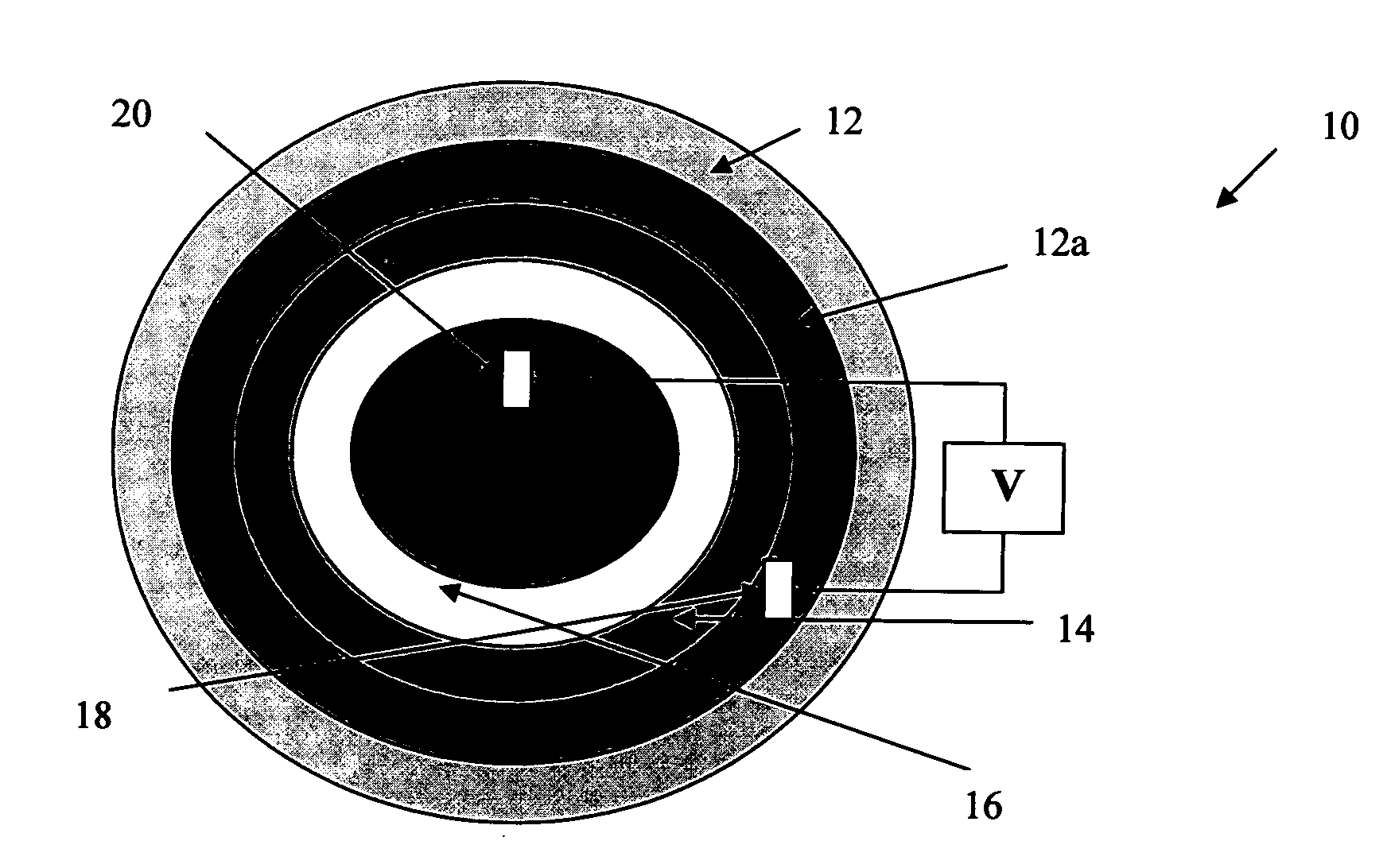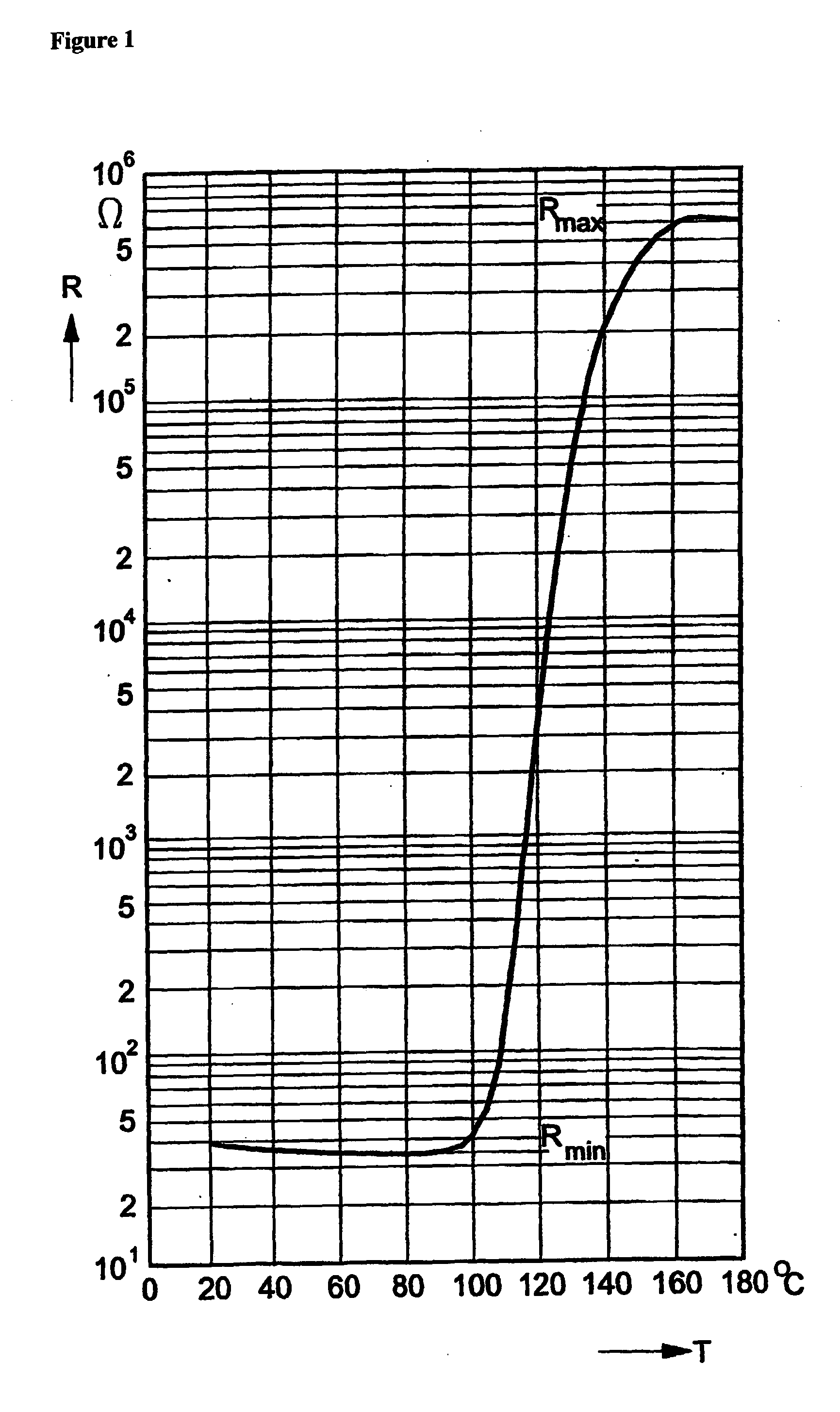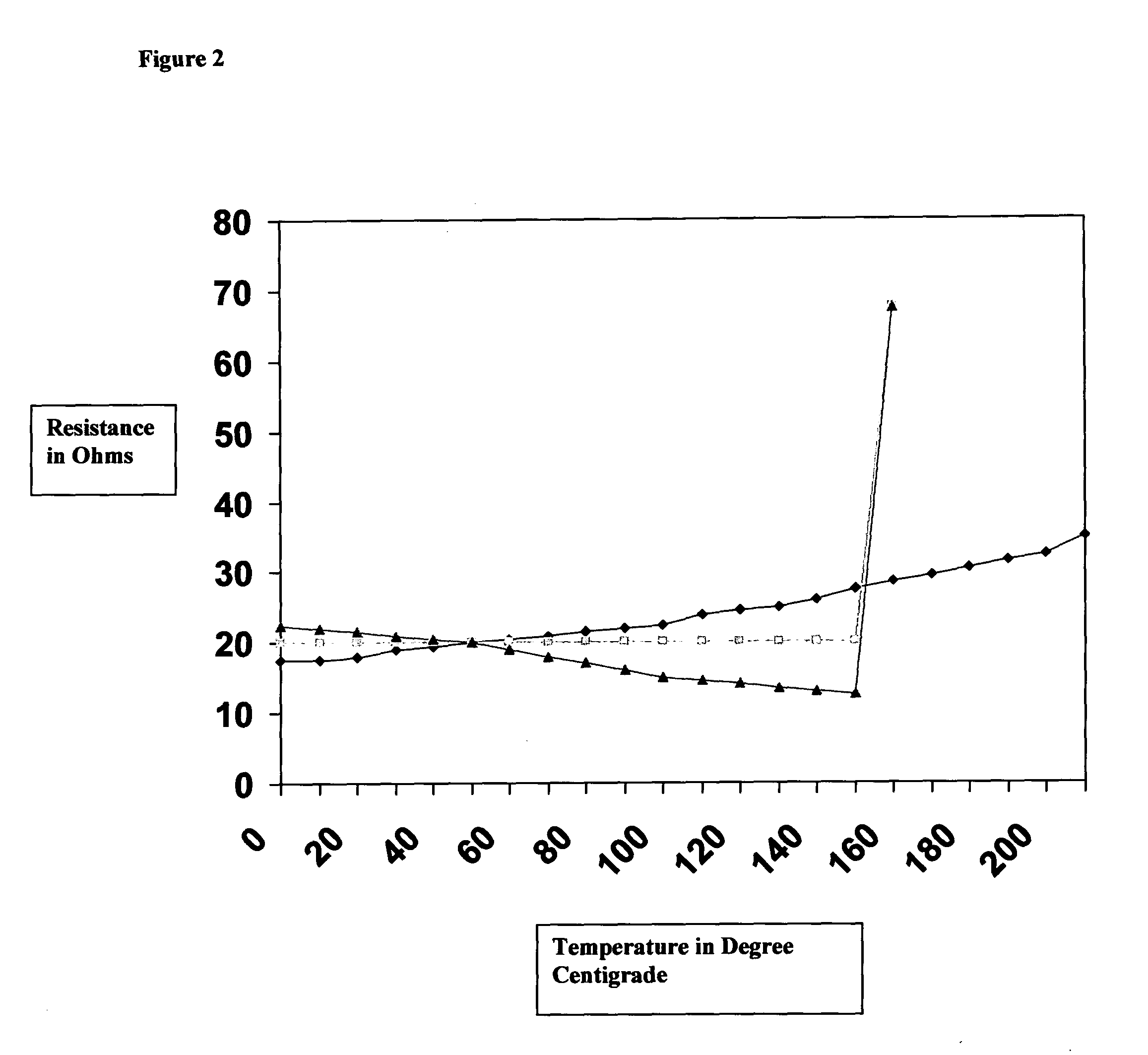Self-regulating electrical resistance heating element
- Summary
- Abstract
- Description
- Claims
- Application Information
AI Technical Summary
Benefits of technology
Problems solved by technology
Method used
Image
Examples
example 1
Construction
[0061]Referring to FIG. 3 the self regulating electrical resistance heating element (10) comprises a substrate (12) comprising an electrically conductive coating (12a) which serves as a first electrical contact (18) on one side of the composite metal oxide layers. Disposed on said electrically conductive layer (12a) is a first metal oxide (14) which has a positive temperature coefficient of resistance. Overlaying the first metal oxide layer, and in electrical series thereto, is a second metal oxide layer (16) having a negative temperature coefficient of resistance and overlaying this layer is a second electrical contact (20).
[0062]The first and second metal oxide layers are in intimate contact with each other, but in an alternative example an electrically contacting layer (not shown) can be provided there between.
[0063]A current can be passed between the first and second electrical contacts, through the respective metal oxide layers.
[0064]In the embodiment illustrated th...
example 2
Methodology
[0074]The heating elements may be manufactured by, for example, thermally spraying a resistive metal oxide (14) with a positive temperature coefficient of resistance onto an electrically conductive surface (12a) of a substrate (12). Indeed, successive layers of the metal oxide may be applied by making a plurality of passes (anywhere from 1 to 10, more preferably 2 to 5, depending on the desired thickness—typically up to 500 μm) using thermal spray equipment. Since the electrical resistance of the resistive metal oxide deposit is dependent upon the thickness, it is possible to increase the resistance by increasing the thickness of the layer deposited. It is therefore preferred to deposit several layers.
[0075]It is known that metal alloys comprised of the nickel-chrome type when oxidised and thermally sprayed exhibit the desired characteristic of increasing resistivity / resistance with increased temperature. Such metal alloys are described in, for example, EP302589, U.S. Pat...
example 3
Alternative Methodology
[0088]The metal oxides comprising the different layers of the self-regulating heating element may be applied to the supporting substrate in a variety of ways using different techniques.
[0089]A first methodology is to deposit a first metal oxide produced from e.g. Ni—Cr—Fe or similar alloys as one complete layer over the conductive surface of a substrate. It may be deposited by thermally spraying it over a given area and in a given configuration to the required calculated thickness. The second metal oxide, produced from e.g. doped barium titinate is then applied over the first metal oxide, again to the required calculated thickness and configuration the object being to “match” the two metal oxides to produce the required combined properties and characteristics of the heating element concerned.
[0090]Alternatively, the reverse of this first methodology may be utilised, whereby the oxygen-octahedral-ferro-electric oxide component is firstly applied to the supporti...
PUM
| Property | Measurement | Unit |
|---|---|---|
| Thickness | aaaaa | aaaaa |
| Particle size | aaaaa | aaaaa |
| Electrical conductivity | aaaaa | aaaaa |
Abstract
Description
Claims
Application Information
 Login to View More
Login to View More - R&D
- Intellectual Property
- Life Sciences
- Materials
- Tech Scout
- Unparalleled Data Quality
- Higher Quality Content
- 60% Fewer Hallucinations
Browse by: Latest US Patents, China's latest patents, Technical Efficacy Thesaurus, Application Domain, Technology Topic, Popular Technical Reports.
© 2025 PatSnap. All rights reserved.Legal|Privacy policy|Modern Slavery Act Transparency Statement|Sitemap|About US| Contact US: help@patsnap.com



